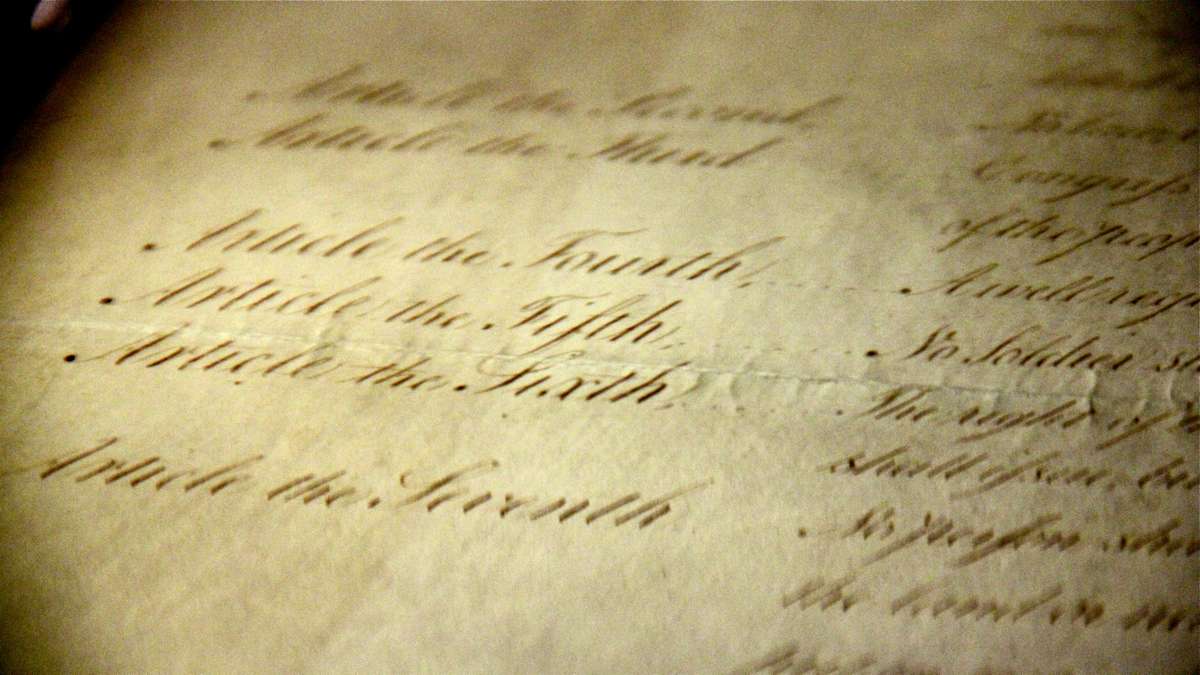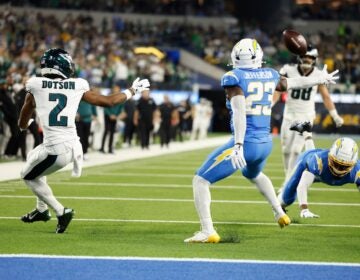Constitution Center touting side-by-side display of rare copies of founding documents
On Monday, the National Constitution Center will unveil a new exhibition space carved out of its building on Independence Mall in Philadelphia, a room devoted solely to display original copies of America’s three founding documents.
It is one of only two places in the country, along with the National Archive in Washington, D.C., with original copies of the United State Constitution, the Declaration of Independence, and the Bill of Rights.
The Constitution Center owns a first public printing of the Constitution, it has an original printing of the Declaration of Independence on long-term loan from a private collector, and the center has just entered into a 100-year arrangement with the New York Public Library to share a copy of the Bill of Rights, one of only 12 original copies still in existence.
“Right after the Bill of Rights was proposed in 1789, George Washington sent 13 copies to each of the colonies, and one copy to the federal government, so that we — the people of each state — could debate those rights and ratify it, which they did in 1791,” said Constitution Center CEO Jeffrey Rosen.
It’s unclear which state this copy of the Bill of Rights was intended for, possibly Pennsylvania. It has been in the possession of the New York Public Library for a century.
The three documents are on display in a new climate-controlled room of the Constitution Center built especially for them, the George H. W. Bush Gallery. The room features an interactive touchscreen allowing visitors to explore the evolution of constitutional language from proposal through debate (“Do we really need a Bill of Rights at all?” asked James Madison) to final ratification. It also tracks that language as it appears in founding documents of foreign governments.
By putting the Bill or Rights next to the original Constitution, you can see that the articles from the former are in a different order when turned into amendments in the latter.
“The amendment we think of as the first, which protects free speech and religious conscience, was not the original first amendment,” said Rosen, hovering over the Bill of Rights in its protective case. “On this faded but inspiring document, the first two amendments dealt with obscure topics – including whether congress can give itself a pay raise, and Congress has to have one representative for every 50,000 inhabitants.
“What was most on the framers mind was issues of representation, not necessarily protecting free speech,” said Rosen.
The exhibition will last three years, until the Bill of Rights is returned to the New York Public Library. The document will regularly return to Philadelphia per the century-long agreement between the Library and the Constitution Center.
WHYY is your source for fact-based, in-depth journalism and information. As a nonprofit organization, we rely on financial support from readers like you. Please give today.









